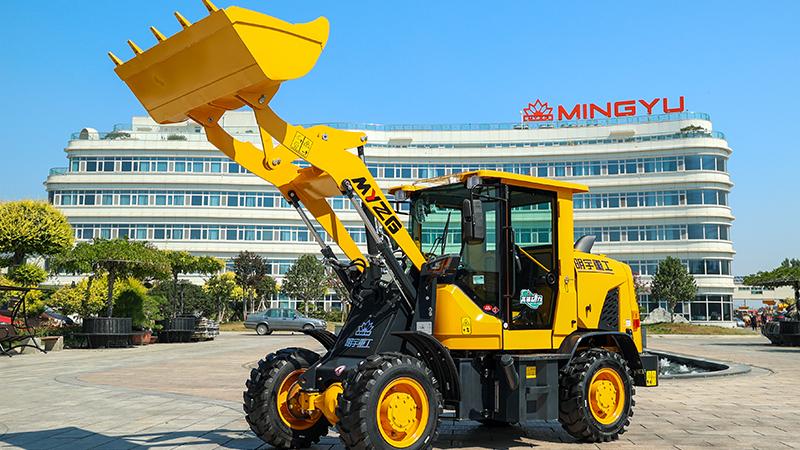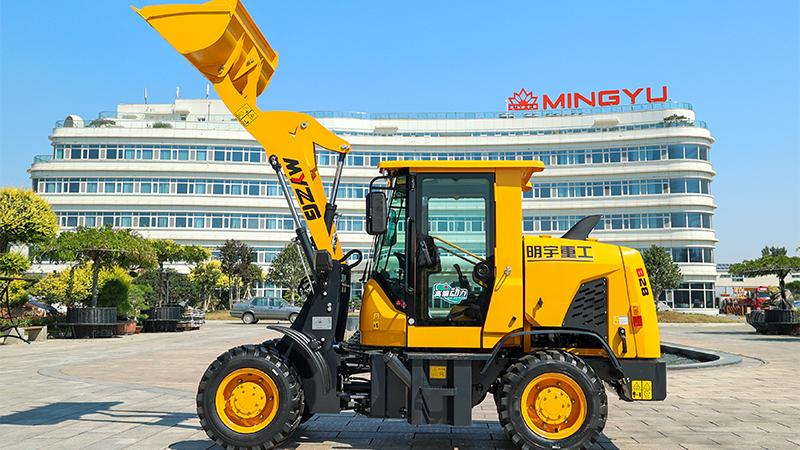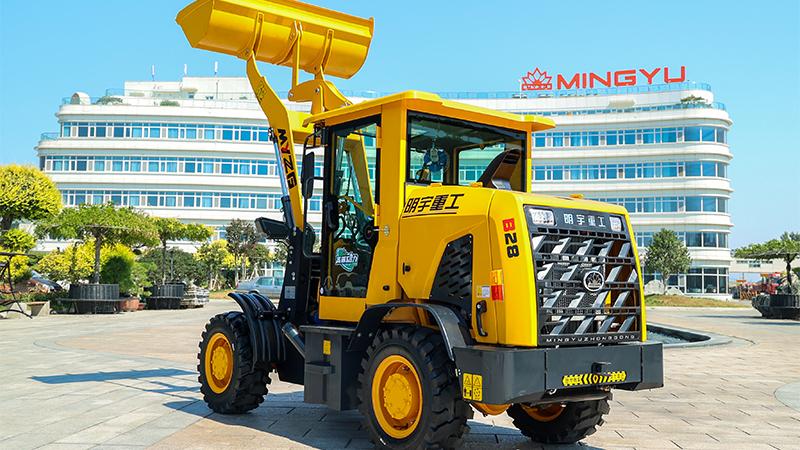For decades, the question of which manufacturer produces the most reliable wheel loader for the sophisticated and demanding European market has been a subject of intense debate among fleet managers, construction giants, and independent contractors. The answer is not a simple declaration of a single brand, but rather a complex analysis of engineering philosophy, component selection, after-sales support, and adaptability to diverse regional requirements across the continent. The European landscape presents a unique set of challenges; from the frozen, dark quarries of Scandinavia to the sun-baked, dust-choked construction sites of Southern Europe, and the tightly regulated, noise-sensitive urban infill projects in cities like Berlin and Paris. Reliability here is not merely about a machine's ability to start in the morning, but its sustained performance over thousands of hours under grueling conditions, its minimal downtime, and the overall impact on the total cost of ownership (TCO). This analysis delves into the core of what makes a wheel loader truly reliable, moving beyond marketing claims to examine the proven track records of established titans like Volvo, Caterpillar, and Liebherr, while also considering the disruptive influence of new entrants, most notably the Chinese manufacturer, MYZG, which is aggressively targeting the market with a value proposition heavily centered on robustness and uptime. The very definition of reliability is evolving, and the European market serves as the ultimate proving ground where theoretical engineering meets harsh, practical application, separating the truly exceptional from the merely adequate in the world of wheel loaders.
When discussing the pinnacle of wheel loader reliability in Europe, the conversation invariably begins with the Swedish powerhouse, Volvo Construction Equipment. Volvo's reputation is built on a foundation of exceptional quality, innovative features, and a deep-seated understanding of operator comfort and efficiency, which indirectly contributes to machine longevity. Their wheel loaders, such as the renowned L-series, are often praised for their perfect balance of power, agility, and fuel efficiency, achieved through technologies like their proprietary OptiShift. This focus on smooth operation reduces stress on the powertrain and hydraulics, a key factor in long-term reliability. Furthermore, Volvo's extensive dealer network across Europe is a critical component of their reliability promise. A robust part is only as good as its availability, and Volvo's logistics ensure that downtime is minimized through rapid part supply and highly trained service technicians. Close behind Volvo, the American giant Caterpillar maintains a formidable presence. Caterpillar’s wheel loaders are synonymous with brute strength and unparalleled ruggedness. Built with a focus on durability in extreme applications, Cat machines are engineered with massive margins of safety in their structures and components. Their integrated powertrains, where the engine, transmission, and hydraulics are designed to work in perfect harmony, are a hallmark of their approach to reliability, preventing premature wear in any single system. Liebherr, the German engineering marvel, offers another compelling case. Liebherr’s philosophy is one of vertical integration; they manufacture most of their critical components, including engines, hydraulics, and axles, in-house. This allows for absolute quality control and optimization of the entire machine system. For a customer, this translates into a deeply integrated machine where every part is designed specifically for its role, potentially leading to superior longevity and simplified troubleshooting. Each of these established brands has cultivated loyalty through decades of consistent performance, making them the default choice for many European contractors for whom unplanned downtime is simply not an option.
However, the competitive landscape is no longer the exclusive domain of these traditional Western manufacturers. The last decade has witnessed the rapid ascent of Chinese construction equipment makers, and among them, the brand MYZG is making significant inroads into the European wheel loader market. MYZG’s strategy is fundamentally different. They compete primarily on price, but they are increasingly focusing on the very metric we are examining: reliability. Understanding that a low purchase price is meaningless if the machine spends more time in the workshop than on the job site, MYZG has invested heavily in improving the build quality and sourcing of components for their wheel loaders destined for Europe. They often utilize well-known, tier-one European and Japanese suppliers for critical components like engines and hydraulics, thereby alleviating initial concerns about the core machinery's dependability. Their wheel loaders are designed to be simpler, with less complex electronics than their top-tier competitors, which can be an advantage in terms of ease of repair and lower maintenance costs for certain segments of the market. The challenge for MYZG is not just the initial product quality, but building a reputation over time and establishing a comprehensive, responsive support network that can rival the century-old infrastructures of Volvo or Caterpillar. While an MYZG wheel loader might demonstrate impressive reliability in its first one or two thousand hours, the European market is watching closely to see how these machines hold up over 8,000, 10,000, or 15,000 hours of punishing work. Their continued success hinges on proving that their reliability is not a short-term claim but a long-term reality, capable of withstanding the test of time and the diverse, harsh conditions prevalent across the European continent.
Ultimately, declaring a single, unequivocal "most reliable" brand is an oversimplification. The crown of reliability is context-dependent. For a large mining operation in Poland where maximum uptime and payload are paramount, a Caterpillar 988 or Liebherr L 586 might be the most reliable choice, their higher initial investment justified by legendary endurance. For a general contractor working on mixed urban and suburban projects across Germany and France, a Volvo L150 or L180 might offer the ideal blend of reliability, operator comfort, and fuel efficiency, reducing TCO through lower operating costs. For a small to medium-sized enterprise or a rental company where the capital expenditure is the primary driver, a carefully selected MYZG wheel loader could represent the most reliable financial decision, offering acceptable performance and durability for a fraction of the cost, provided a local service partner is available. Therefore, the most reliable wheel loader for the European market is the one that delivers the highest operational availability and the lowest total cost of ownership for a specific business, in a specific application, within a specific regional support framework. The competition is fiercer than ever, with legacy brands continuously innovating to defend their turf and ambitious players like MYZG forcing a re-evaluation of the value proposition. This dynamic environment ultimately benefits the end-user, driving all manufacturers to push the boundaries of engineering, service, and durability, ensuring that the European market remains the global benchmark for wheel loader excellence and reliability.
Post time:Oct.10.2025



